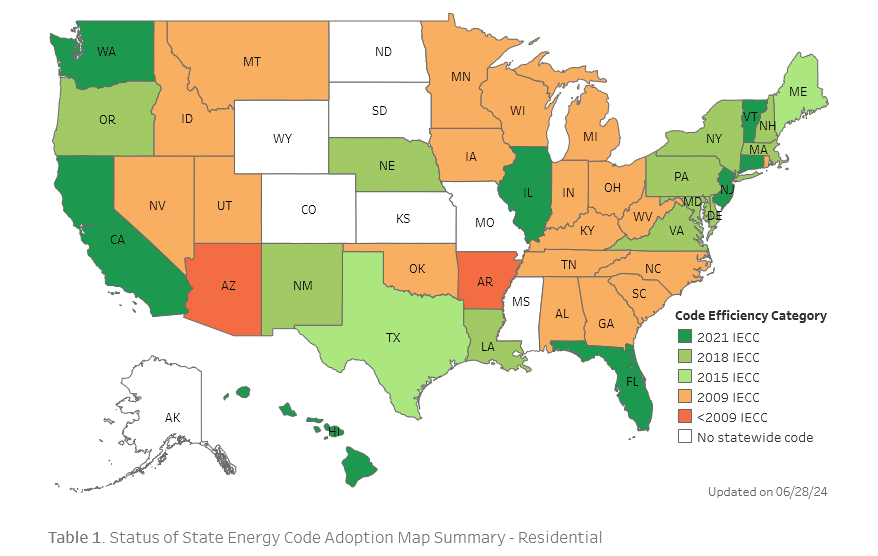Not All States Follow the Same Building Energy Code
As you can see from the main picture, there is a significant discrepancy across the US regarding which National Energy Code each state follows. That is because the National Energy Code has to be adopted by the individual States, and some states adopt it county by county, not at the state level. As you can see, very few states are following the latest 2021 National Energy Code.
The National Energy Code’s purpose is to give states a road map for making new residential homes use less energy through insulation improvements and other efficiency gains. The goal is to get to Zero Energy Ready Homes (ZERH) in the 2030s and then to Net-Zero Homes next.
Why the National Energy Code Matters for Mortgages
The problem is that states need to adopt the newer National Energy Codes (as shown in the picture). This has caused such a problem that you may have heard about that in the next year or two, to get a federally backed home mortgage for that new home build, it must adhere to the latest National Energy Code. Federally backed home mortgages account for about 85-90% of all home mortgages. As you can imagine, that has caused quite a stir in the residential construction industry.
What Happened in the National Energy Code in 2012 to Cause Such a Problem? Follow along and find out.
In Minnesota, we currently use the 2012 National Energy Code with amendments for residential construction. According to the Department of Energy, Minnesota follows the equivalent of the 2009 National Energy Code like a fair amount of the country.
The 2012 National Energy Code was the first time Continuous Insulation (CI) for exterior walls was introduced for use in climate zones 6,7 and 8. No more 2×6 walls with just fiberglass batts, the entire exterior wall had to have an extra layer of insulation board or use another wall system of the equivalent higher R-value. Climate zones 6&7 covers all of the state of Minnesota. Minnesota adopted many of the requirements of the 2012 Energy Code but did not adopt the continuous insulation requirement for the exterior wall and a couple of other provisions of the 2012 National Energy Code due to the much higher construction cost and other issues. We were among the few states affected by the 2012 National Energy Code changes.
2021 National Energy Code: Expanding CI to More Climate Zones
The 2021 National Energy Code extended the CI exterior walls to climate zones 4 and 5. Now, climate zones 4, 5, 6, 7, and 8 need to use CI insulation or another equivalent R-value wall system. Adding climate zones 4 and 5 really shook things up in the construction industry because these changes now affect about 75% of the US and reflect a broader shift toward a unified, stricter energy efficiency building code.
What’s Next for Builders and Homeowners in Minnesota
With the Energy Code background out of the way, let’s look at the parts of the 2021/2024 National Energy Code and Zero Energy Ready Home (ZERH) build requirements already covered in the current Minnesota Energy Code for our builds. We will also cover what is a standard practice or what builders put in new homes by default because home buyers are expecting it.
